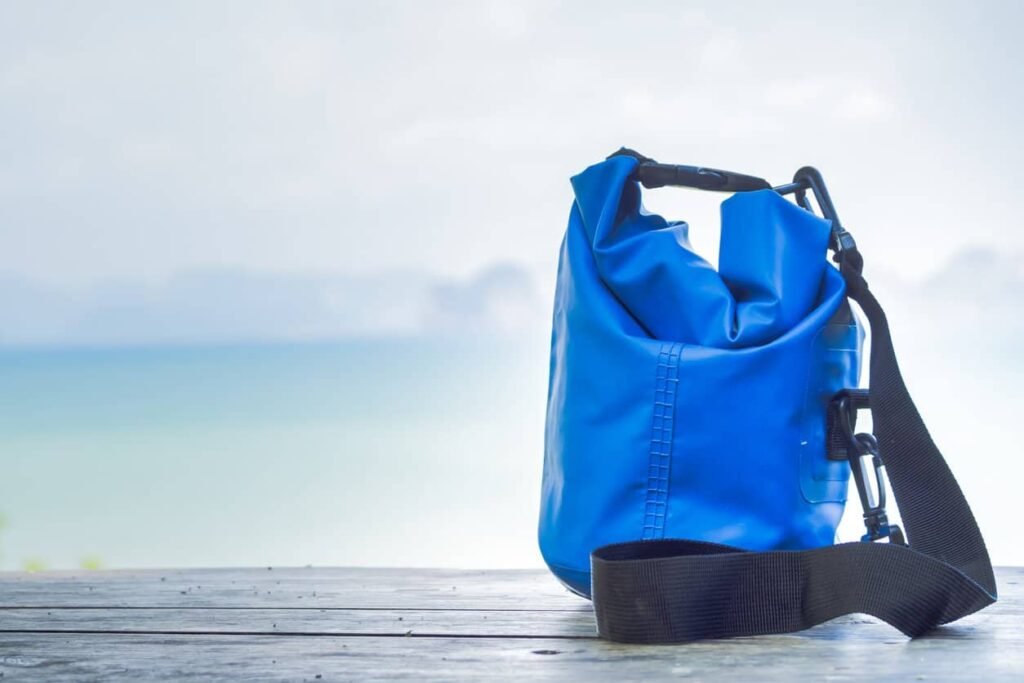
Dry bags are hailed as the ultimate guardians of your gear when you venture into the great outdoors. They are designed to keep your belongings dry and safe from the elements, making them an essential accessory for kayakers, campers, hikers, and outdoor enthusiasts of all kinds. But the question that often lingers in the minds of adventurers is, “Are dry bags actually waterproof?” It’s a valid concern, considering that the last thing you want when embarking on an outdoor expedition is soggy gear.
Understanding Dry Bags
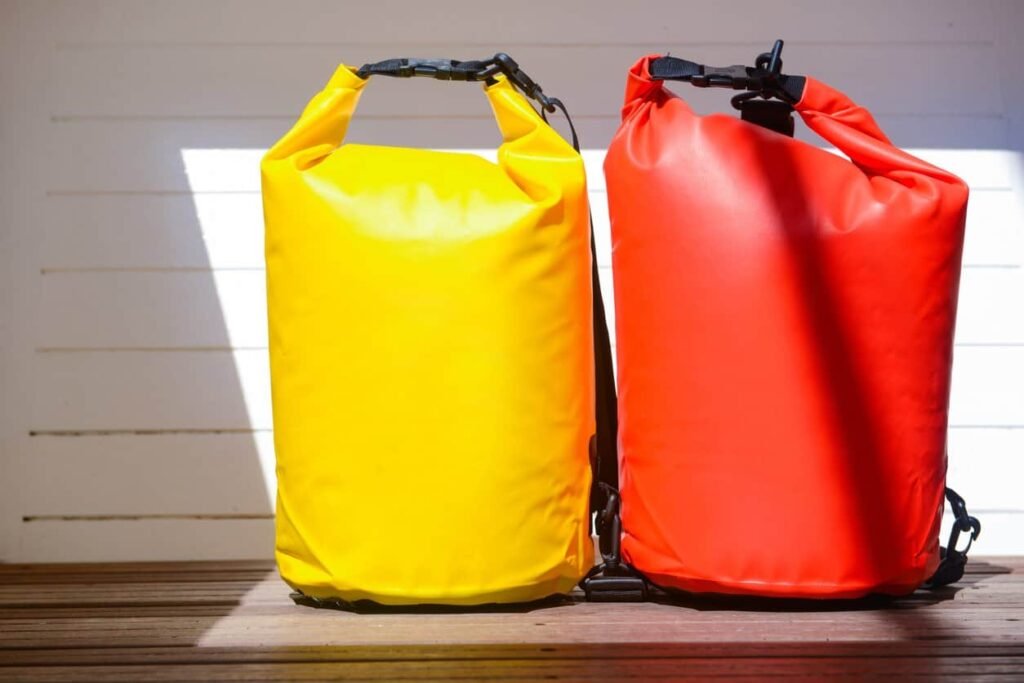
The Purpose of Dry Bags
- Dry bags serve a crucial purpose in outdoor adventures: they keep your gear dry. Whether you’re kayaking through choppy waters, hiking in rainy conditions, or embarking on a camping trip, dry bags offer a waterproof sanctuary for your essentials.
- These bags are designed to prevent water, moisture, and even dust from penetrating their interior. This ensures that your clothing, electronics, food, and other valuable items remain dry and intact, no matter the conditions.
Construction and Materials
- High-quality dry bags feature welded seams, which are completely sealed and waterproof.
- Some dry bags are transparent or semi-transparent, allowing you to quickly locate items without opening the bag.
Types of Dry Bags
- Roll-top dry bags are the most prevalent and offer a straightforward, waterproof closure. Users roll the top several times and secure it with a buckle or clip to create a watertight seal.
- Zipper dry bags feature a waterproof zipper closure, providing quick access to your gear while maintaining waterproofing.
Benefits of Using Dry Bags
Using dry bags provides peace of mind, knowing that your gear is protected from the elements. This is especially important in scenarios where exposure to water can ruin equipment or compromise safety.
Myths vs. Reality
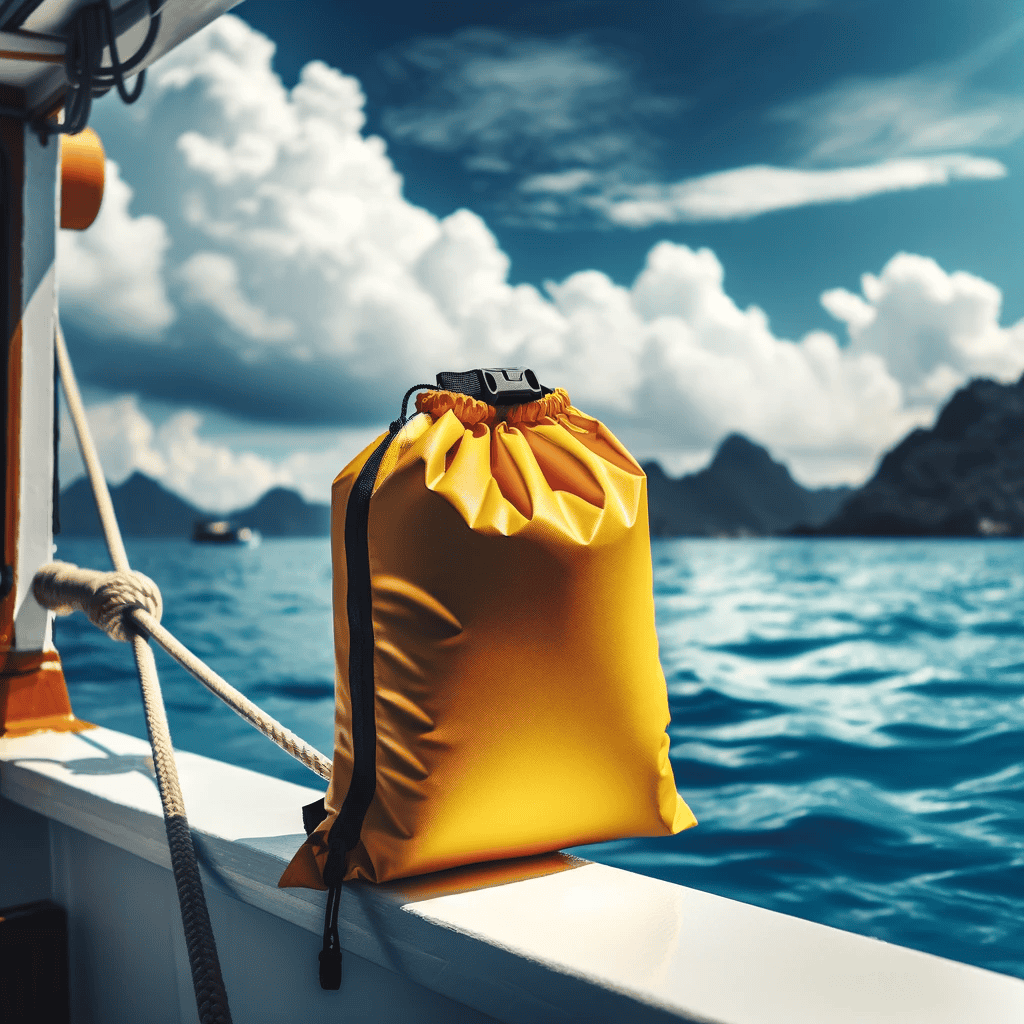
Myth: All Dry Bags Are 100% Waterproof
- Reality: While dry bags are designed to be highly waterproof, claiming they are 100% waterproof is not entirely accurate. The term “dry bag” implies a high level of waterproofing, but it’s essential to understand the limitations.
- Dry bags are waterproof under normal conditions and can withstand splashes, rain, and brief submersion. However, they may not remain completely dry if submerged for extended periods or subjected to extreme pressure, such as deep-sea diving.
Myth: Dry Bags Are Only for Water Sports
- Reality: While dry bags are commonly associated with water sports like kayaking, canoeing, and boating, their usefulness extends far beyond aquatic activities.
- Dry bags are excellent for protecting your gear during camping, hiking, and backpacking trips. They shield your belongings from rain, river crossings, and muddy terrain.
- Outdoor enthusiasts use dry bags for various purposes, from keeping electronics dry during a downpour to ensuring spare clothing stays dry in the wilderness. Their versatility makes them an indispensable tool for any adventure.
The Waterproofing Mechanism

Material Selection and Sealing Technology
- Sealing Technology: The primary waterproofing feature of dry bags is their roll-top closure system. This involves rolling the top of the bag down several times before securing it with a buckle or snap. This action creates a watertight seal that effectively prevents water from entering the bag.
Taped Seams
- Seam Sealing: To ensure complete waterproofing, many dry bags have their seams sealed. This process involves applying waterproof tape or heat-sealing the seams to prevent water from seeping through the stitching.
- Welded Seams: Some premium dry bags feature welded seams, which are inherently waterproof. Welding joins the seams without the need for stitching, offering enhanced waterproofing and durability.
Waterproof Ratings
- IPX Rating: Dry bags often come with IPX ratings, such as IPX7 or IPX8, which indicate their waterproof capabilities. These ratings are standardized and help consumers understand the level of waterproofing a bag provides.
- Submersible vs. Splashproof: It’s important to note that not all dry bags are equal in their waterproofing abilities. Some are designed for submersion and can handle full immersion in water, while others are intended for splashproof protection and may not be suitable for prolonged submersion.
Testing and Quality Assurance
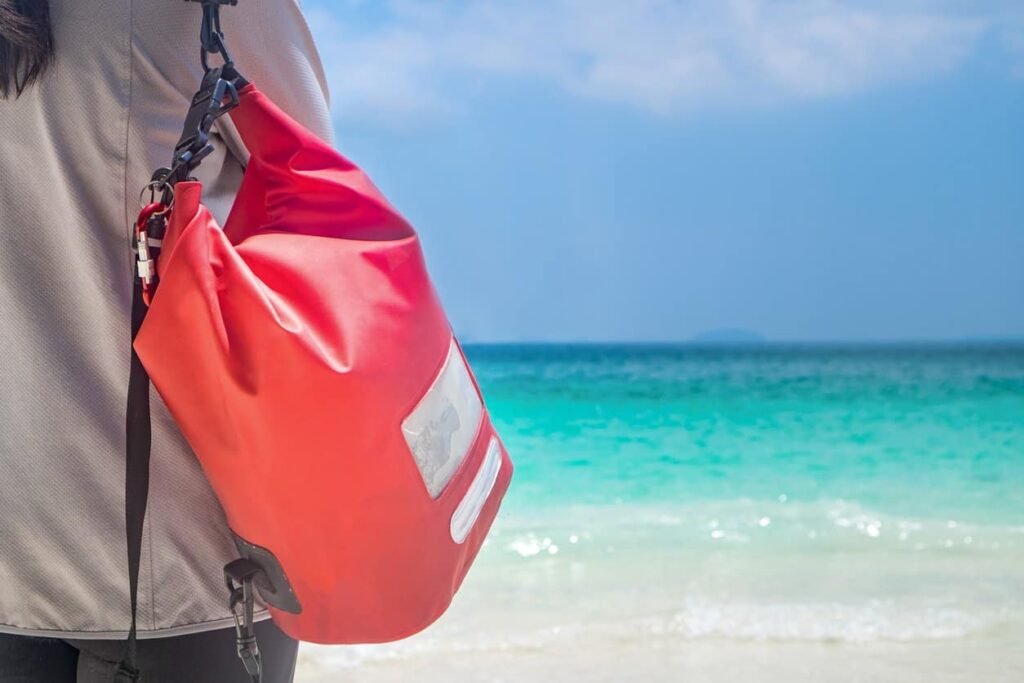
Waterproof Testing Protocols
- Submersion Tests: Dry bags undergo submersion tests in controlled environments. They are submerged in water for extended periods to evaluate their resistance to water penetration. Any signs of leakage result in design modifications or reevaluation.
- Pressure Testing: Some dry bags are subjected to pressure tests to simulate the conditions they might encounter during water-based activities. This ensures they can withstand the pressure variations without compromising their waterproof seal.
Quality Control Standards
- ISO Certification: Many manufacturers adhere to International Organization for Standardization (ISO) standards, particularly ISO 9001, which focuses on quality management systems. Compliance with ISO standards demonstrates a commitment to quality and customer satisfaction.
- Material Inspection: Thorough inspections of materials, seams, and closures are conducted to identify any defects or weaknesses. Quality control teams work diligently to maintain consistent product quality.
Third-Party Verification
- Independent Testing: Some dry bag manufacturers opt for third-party testing and verification. This adds an extra layer of assurance, as impartial organizations validate the waterproof claims of the products.
User Feedback and Reviews
- Customer Feedback: User reviews and feedback play a crucial role in quality assessment. Manufacturers pay attention to customer experiences and use this information to make improvements if necessary.
Tips for Ensuring Waterproofness
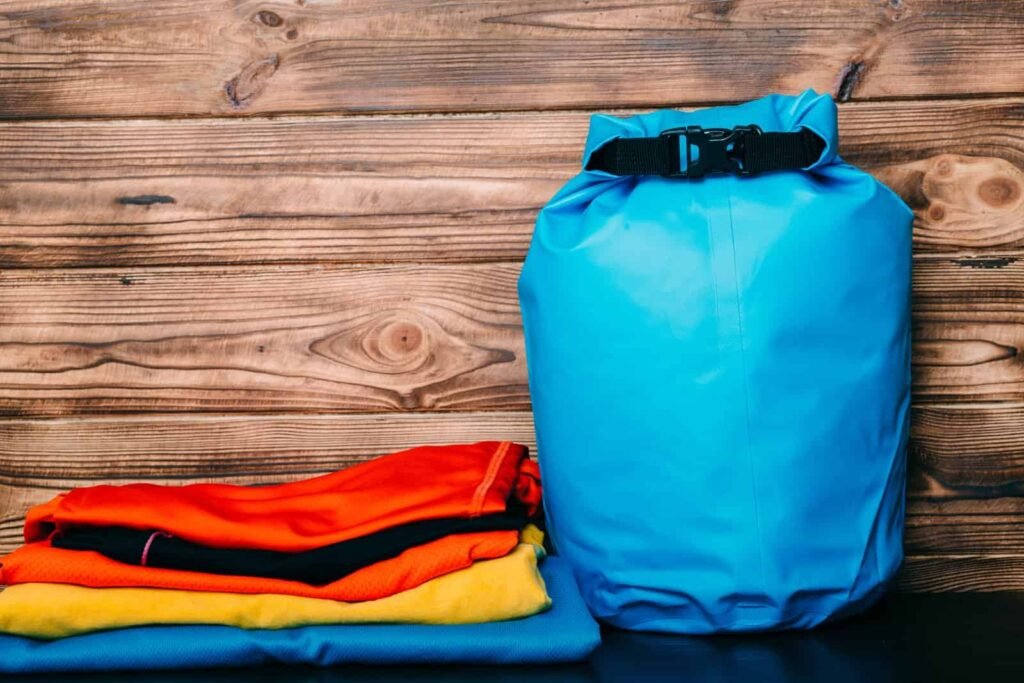
Proper Closure Technique
When sealing your dry bag, ensure that you roll the top down tightly at least three times before securing it with the buckle or fastener. This creates a reliable waterproof seal by eliminating air and water entry points.
Inspect for Damage
Regularly inspect your dry bag for any signs of damage, such as punctures, abrasions, or wear and tear on seams and closures. Repair any issues promptly using specialized patch kits designed for dry bags.
Keep Sharp Objects Separated
Avoid storing sharp or pointed objects directly inside your dry bag. Place them in protective cases or containers to prevent accidental punctures from occurring inside the bag.
Avoid Overloading
Overloading a dry bag can strain its seams and closures, potentially compromising its waterproofing. Adhere to the bag’s recommended weight and volume limits to maintain its integrity.
Periodic Maintenance
Rinse your dry bag with fresh water after each use, especially if it has been exposed to saltwater or contaminants. Allow it to dry thoroughly before storing it to prevent mold or mildew growth.
User Experiences and Recommendations
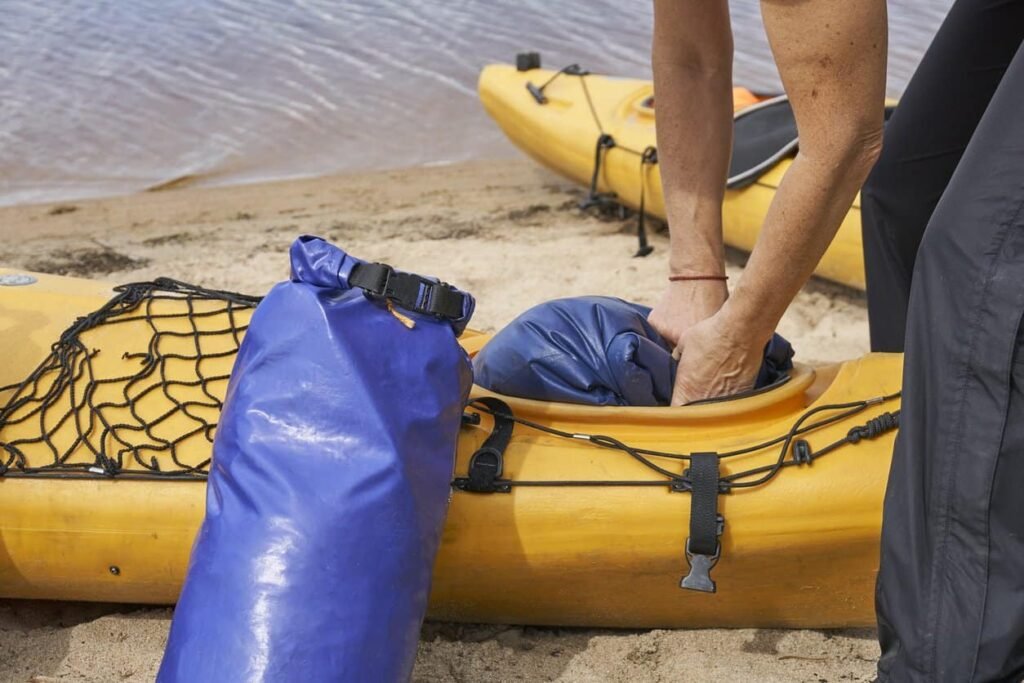
Kayaking Enthusiast Insights
Kayakers often rely heavily on dry bags to keep their gear and personal items safe during wet adventures. User reviews highlight the importance of ensuring a secure seal and opting for dry bags with multiple layers of protection for added peace of mind. Many recommend brands like Sea to Summit, NRS, and Watershed for their durability and reliability.
Camping and Hiking Enthusiast Recommendations
Campers and hikers suggest using dry bags not only for protecting essentials but also for organizing gear inside backpacks. Compression dry bags are favored for saving space and keeping clothes dry. Outdoor enthusiasts often prefer roll-top closures over zippered ones for better waterproofing.
Boaters’ Insights
Boaters emphasize the importance of choosing dry bags with a high waterproof rating (IPX7 or higher) for boating adventures. They recommend testing dry bags before each trip by submerging them in water without any valuable items inside to ensure their reliability.
Survivalists’ Recommendations
Survivalists and bushcraft experts often use dry bags to protect essential gear in emergency situations. They recommend investing in dry bags made from rugged materials like PVC or reinforced fabrics. Additionally, they suggest carrying important survival equipment, such as fire-starting materials and first-aid kits, in small dry bags within their larger packs.
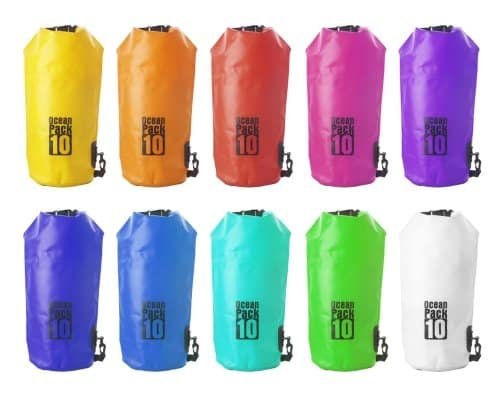
FAQ
Q1: Can all dry bags keep my belongings completely dry?
A:Not all dry bags are created equal. The degree of waterproofness can vary depending on the brand and design. Look for dry bags with a higher waterproof rating (such as IPX7 or IPX8) for better protection against water.
Q2: What’s the difference between roll-top and zippered dry bags?
A:Roll-top dry bags are sealed by folding the top down several times and buckling it, creating a watertight seal. Zippered dry bags have a waterproof zipper closure. Roll-top bags are generally considered more reliable for waterproofing.
Q3: How do I test the waterproofness of my dry bag?
A:To test a dry bag, submerge it in water without any valuable items inside. Squeeze out any excess air, seal it, and leave it underwater for a few minutes. Check for any signs of water intrusion. If it stays dry inside, it’s working properly.
Q4: Can I repair a damaged dry bag?
A:Minor punctures or tears in dry bags can often be repaired using specialized repair kits designed for waterproof gear. Follow the manufacturer’s instructions for the best results.
Q5: What size dry bag do I need?
A:The size of the dry bag you need depends on the volume of items you want to protect. Consider the total volume and dimensions of your gear, and choose a dry bag that provides enough space while minimizing excess air.
Q6: Are dry bags suitable for electronics like phones or cameras?
A:Yes, dry bags can protect electronics from water, but it’s important to choose a dry bag with the right size and level of protection. Look for dry bags with clear windows or touchscreen compatibility for electronics.
Conclusion
In the world of outdoor adventure, having reliable gear is paramount. After delving into the intricacies of dry bags, their construction, and the factors influencing their waterproofness, we can confidently assert that dry bags are indeed waterproof. Whether kayaking, hiking, or at the beach, a trusty dry bag is your reliable companion, offering peace of mind that your gear will remain safe and dry, enhancing your overall outdoor experience. Embrace the world of dry bags, explore their uses, and embark on adventures with confidence, knowing your gear will stay protected, no matter what nature brings.

